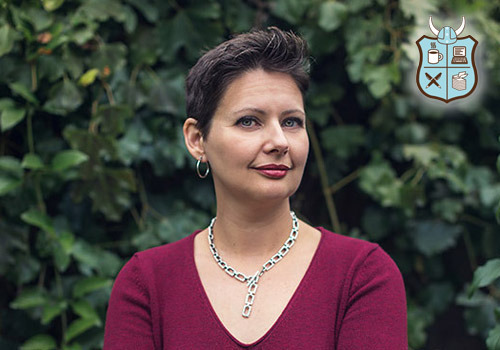Pro Tips from a NaNo Coach: Write Where the Heat Is

NaNoWriMo can seem like a daunting task sometimes, for NaNo newbies and veterans alike. Fortunately, author Carolina De Robertis is here to share her advice on how to overcome some of NaNo’s obstacles:
Something that never ceases to amaze me about writing: it can be our greatest refuge, and, at the same time, one of the most frightening things we ever do. It’s a space that, for better or worse, is entirely ours to shape, to define. The blank page can welcome and reflect us like nothing else in the world, and yet, at the same time, all that blank space can make self-doubt rise up and overwhelm us.
I’ve written four novels now, and I can tell you that this dynamic continues on, because even when you’ve finished a book before, creating a new novel means diving yet again into the unknown. I joined NaNoWriMo when I was already a published author, back in 2011, to write an early rough draft of my third novel, The Gods of Tango. Yes, it took me four more years after completing NaNoWriMo to expand, research, revise, and polish the book. Yes, those stages do come after the sweet thrill of crossing that 50,000 word finish line. But the power of NaNo lies, in part, in compressing time to make you swim forward even though you don’t know where you’re going, to make the voice of self-doubt shut up and let you write.
So, for now, be bold.
For now, ride the NaNo flow as if it were a great roaring river, the pure exhilaration of the journey enough to keep you going, splashed, drenched, gliding on a story that is yours and yours alone.
If you’ve got momentum, fantastic. Trust it. Let it carry you.
If you start feeling stuck, here are a few techniques that I’ve offered in the past to creative writing students, as well as used myself:
1. Key into Burning Questions.Set aside 20 minutes to brainstorm the burning questions you’re carrying about your book, and the questions you want the book to explore. These can be questions about the content and story, or they can be questions about the deeper themes your novel touches on. Then use these questions as jumping-off points for your writing. For example, to explore a question about your character’s relationship with her mother, you might write a scene in which they meet in a kitchen or castle or boutique or seedy cabaret (hey, I don’t know, it’s your book!) in which secrets between them are laid bare.
2. Write Where the Heat Is.You don’t have to write in order. Many novelists don’t—or, even if we do, we might jump forward to sketch a later scene so as to better understand what we’re muddling through in chapter 3. So, if you’re feeling stuck, feel free to jump elsewhere in the trajectory of your novel, following your instinct or curiosity; in other words, write where the heat is. You might get more traction there, and then have the increased clarity you need to bring earlier sections to life.
3. Try Bibliomancy.Use books to spur your creative process. Keep a few of your favorite novels on hand, novels you deeply admire, the ones that made you long to be a writer, and whenever you feel stuck, open them to a random page or two. Read at least a page. Let something on that page spark you. Then carry the spark back with you into your own writing. I’m not talking about imitation, but inspiration. The books we admire are among our best companions in the writing life.
Above all, as much as possible, enjoy the journey. Even when it’s hard, we’re so lucky to be alive here, on the planet, writing.
May the Muses be with you!
Carolina De Robertis, a writer of Uruguayan origins, is the author of the novels The Gods of Tango, Perla, and The Invisible Mountain. Her bestselling books have been translated into seventeen languages, and have won numerous awards. In 2017, the Yerba Buena Center for the Arts named her on its 100 List of people “shaping the future of culture.” She teaches writing at San Francisco State University. Her fourth novel, The Burning Edge of the World, comes out in 2019.
Chris Baty's Blog
- Chris Baty's profile
- 63 followers



